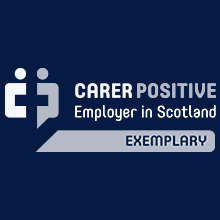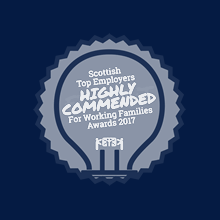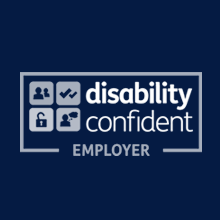Migraine-in-primary-care-advice-Nov-2024.pdf
Please note this page is designed as a summary of headache pathways (based on NHS Scotland National Headache Pathway and SIGN 155). Please consult LJF, BNF or drug Summary of Product Characteristics for contraindications, cautions, side effects, etc.
Migraine and Chronic Daily Headache
These recommendations apply to episodic and chronic migraine. Most patients with chronic daily headache referred to neurology have underlying chronic migraine; which often coexists with medication overuse, sleep disturbance and fatigue.
Migraine treatment can be tried in these patients as well (see leaflet on chronic daily headache at RefHelp).
M.A & M.M. 19-11-24
Who to refer:
- Patients with migraine that is interfering with social or occupational functioning or where moderate/severe headache days are more than 10 days a month.
- Patients who have tried at least three first line preventative agents (tricyclic, topiramate, propranolol, candesartan). When using preventative treatment migraine ensure medication has been tried at a therapeutic dose (if tolerated) for 8 weeks each expecting a reduction of migraine. There is no medication that abolishes migraine.
Topiramate should not be given in women in childbearing age, and it is no longer a requirement before referral/advanced therapies for this population group. If it is prescribed to women of childbearing age then you need to follow the Pregnancy Prevention Programme procedure – Topiramate (Topamax): introduction of new safety measures, including a Pregnancy Prevention Programme – GOV.UK (www.gov.uk)
- Patients who have not responded to at least three first line preventive treatment may be started on gepants (Atogepant/Rimegepant) prior to referral to secondary care. Responses may happen after 3 months of treatment, so it is recommended to keep for 4-6 months if tolerated, before assessment.
- Atogepant 60mg daily may be prescribed for episodic or chronic migraine in primary care if patients have more than 10 moderate/severe migraine days per month and have not responded to three preventative agents (tricyclic, propranolol, candesartan).
- Rimegepant 75mg every other day may be prescribed as preventative for episodic migraine in primary care if patients have 10 to 14 moderate/severe migraine days per month and have not responded to three preventative agents (tricyclic, propranolol, candesartan).
- Rimegepant 75mg once daily may also be prescribed as acute treatment in primary care – no more than 10 times a month – for patients who have not responded to adequate trials of at least 2 triptans or triptans are contraindicated. At the moment combination of two different gepants is not recommended.
Who not to refer:
- Patients with episodic migraine which is not interfering with social or occupational functioning and in whom further preventatives are not indicated.
- Patients who have not been through the acute treatment and at least three preventative agents (tricyclic, topiramate (except women in childbearing age), propranolol, candesartan).
- Patients with clear medication overuse headache where that has not been addressed yet.
Information on eligibility for Botulinum Toxin, injectable CGRP drugs (eg Erenumab, Fremanezumab, Galcanezumab):
Patients may be eligible for Botulinum Toxin or CGRP medications if they meet the criteria for ‘who to refer’ listed above, dependent on an assessment in the headache clinic.
General Lifestyle Advice
Common triggers: Sleep deprivation/excess, missing meals, exercise, stress (too much or relaxing after stress), minor neck/head injury, menstruation, alcohol. Useful advice available at The Migraine Trust or the Headache Relief Guide – (interactive tools built for teenagers but good for adults too). Sleep management (prescribe ‘Sleepio’ app for free in NHS Scotland), aerobic exercise and psych therapies help some.
Acute Treatments– have you provided adequate trials of different acute treatments?
All acute treatments work better if combined with sleep where possible
Acute treatments should be taken no more than 10 times a month to avoid medication overuse headache
| Mild to moderate | Moderate to severe | Add antiemetic if significant nausea |
| Paracetamol 1000mg | Sumatriptan 50-100mg | Prochlorperazine 10mg (also has an analgesic effect) |
| Aspirin 900mg | Try other formulary triptans if Sumatriptan ineffective: Almotriptan, Rizatriptan or Frovatriptan (longer half-life). | Metoclopramide 10mg (prokinetic effects useful) |
| Ibuprofen 400-600mg | Consider other routes of administration if significant nausea or vomiting, i.e. nasal Zolmitriptan 5mg, subcut Sumatriptan 6mg | Antiemetics should be used short term to reduce risk of side effects |
| Naproxen 500mg | Rimegepant 75mg daily can be considered for patients not responding to ≥2 triptans, or if triptans contraindicated |
Avoid opioids – less effective and significant risk of medication overuse headache.
Any triptan can be used in combination with NSAID or Aspirin, if triptan alone does not give sufficient relief.
Prophylaxis – have you provided adequate trials of different prophylactic treatments?
Prophylaxis should be considered when patients are overusing acute treatments, or headaches interfere with social or occupational functioning. Patients must be counselled that prophylaxis aims to reduce the frequency and/or severity of attacks, not abolish them completely; a reduction of 30% in either frequency or severity is a positive response.
Patients should be warned to expect some side effects, particularly initially, and use each treatment for at least 8 weeks after reaching maximal tolerable dose, before deciding if a treatment is effective; avoid discontinuation of tolerable prophylaxis prior to this point. Slower titrations may improve tolerability, and some more minor side effects may improve after a period of dose stability.
| Medication | Amitriptyline | Candesartan | Propranolol | Topiramate* |
| Starting dose | 10mg nocte If excess drowsiness, try a less sedating tricyclic e.g. Nortriptyline | 2-4mg OD Check baseline Cr&E | 10-20mg BD | 25mg nocte NB: Contraindicated in women of childbearing potential unless pregnancy prevention programme in place |
| Suggested increment | 10mg every 1-2 weeks | 2-4mg every 1-2 weeks Check Cr&E intermittently | 10-20mg BD every 1-2 weeks | 25mg every 1-2 weeks |
| Target dose (or highest tolerated) | 50mg nocte If partially effective and well tolerated, further up titration possible to 100mg | 16mg OD (or 8mg BD) | 80mg BD | 50mg BD If partially effective and well tolerated, further up titration possible to 100mg BD |
Gepants: can be prescribed for prevention of episodic or chronic migraine in primary care if patients have more than 10 moderate/severe migraine days per month and have not responded to three preventative agents.
Atogepant 60mg daily: for episodic or chronic migraine. Rimegepant 75mg every other day: for episodic migraine.
Botox and CGRP medications (e.g. Erenumab, Fremanezumab, Galcanezumab) are available for eligible patients on prescription or recommendation from the Headache clinics run in Neurology.
Prenancy : Migraine will often improve during pregnancy, but not for all patients. Maximise lifestyle advice. See separate RefHelp page for guidance on therapies for management. Most migraine treatments require caution, or are contraindicated, in pregnancy.
Open access CT brain scan: NHS Lothian offers open access CT head scan. Evidence suggests that CT head has no long-lasting reassuring effect in patients worried about their headache. Consider the 10% rate of incidental findings, negligible chance of a relevant finding in a patient with migraine, radiation dose and resource implications of a CT head scan.
National Headache Pathway: https://www.nhscfsd.co.uk/our-work/modernising-patient-pathways/specialty-delivery-groups/neurology/national-headache-pathway/
NHS Lothian Joint Formulary: https://formulary.nhs.scot/east/central-nervous-system/pain-related-conditions/migraine/
The Migraine Trust” – www.migrainetrust.org.
http://www.headachereliefguide.com (interactive tools built for teenagers but good for adults too). Aerobic exercise, regular sleep helps some.














